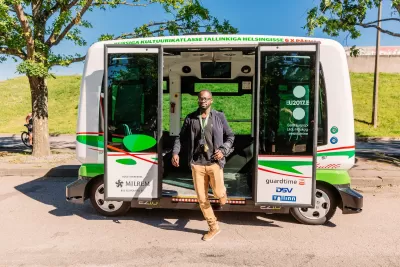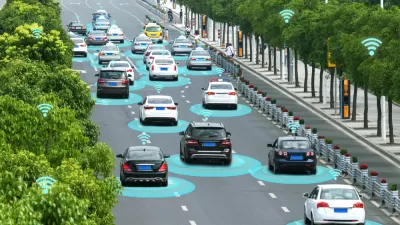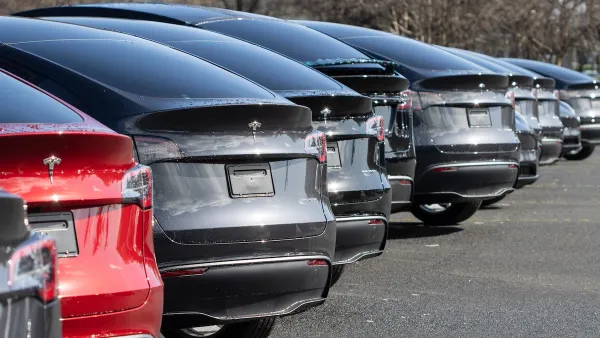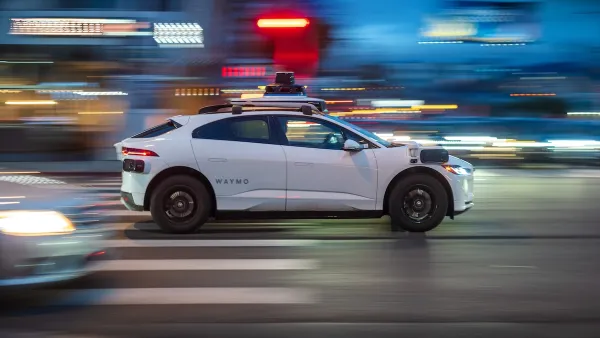While we're still far from a Jetsons-style reality, understated autonomous features could be the key to safer transportation.

With billions of dollars invested in autonomous vehicles and federal policy undergoing revision to accommodate them, Allison Arieff, writing in City Monitor, takes stock of the industry and its actual achievements and potential.
Arieff starts with the basic questions about the role of autonomous vehicles in our lives. "What problem are they going to solve? Is the goal to end car ownership? Kill public transit? Rescue public transit? Normalise super-commutes? Eliminate the need for parking lots?" With 2020 making every industry reevaluate its priorities, AV developers and investors are shifting the discussion to focus on the realistic ways that autonomous vehicles can craft their niche, looking at avenues such as "buses, transit and last-mile goods delivery."
Whereas autonomous cars once promised safety as a top feature, the advances being implemented in human-driven cars have the potential to make that advantage obsolete. "By 2022, just about every new vehicle sold in the world’s wealthy nations will have at least automatic emergency braking, which is expected to reduce injury-related crashes by 56% and reduce rear-end crashes by half." And, Arieff argues, "too much focus on tech that may or may not be as deployable or as transformative runs the risk of crowding out more important transportation conversations about low-hanging fruit like reduced speed limits, road diets and congestion pricing."
Autonomous vehicles seek to separate the driver from the driving, but they're not out to remove them from the car altogether. "Startups are focusing on what you can be doing during your trip, whether in an AV or on mass transit," but not on reducing the number of cars on the road. "Instead of exploring more effective solutions that could carry more people from one destination to the next, the driverless vehicle, by definition, keeps the car as the number one choice for getting from A to B."
Recent changes, however, point to a renewed focus on integration with transit, last-mile solutions, and goods movement. "The integration of AV technology into public transport networks and delivery systems presents new opportunities to develop multimodal systems for equitable, accessible and sustainable urban mobility." As Arieff writes, the future of autonomous vehicles may not be flying taxis, but safer and more reliable buses—and that's not a bad thing.
FULL STORY: The underwhelming reality of driverless cars

Maui's Vacation Rental Debate Turns Ugly
Verbal attacks, misinformation campaigns and fistfights plague a high-stakes debate to convert thousands of vacation rentals into long-term housing.

Planetizen Federal Action Tracker
A weekly monitor of how Trump’s orders and actions are impacting planners and planning in America.

San Francisco Suspends Traffic Calming Amidst Record Deaths
Citing “a challenging fiscal landscape,” the city will cease the program on the heels of 42 traffic deaths, including 24 pedestrians.

Defunct Pittsburgh Power Plant to Become Residential Tower
A decommissioned steam heat plant will be redeveloped into almost 100 affordable housing units.

Trump Prompts Restructuring of Transportation Research Board in “Unprecedented Overreach”
The TRB has eliminated more than half of its committees including those focused on climate, equity, and cities.

Amtrak Rolls Out New Orleans to Alabama “Mardi Gras” Train
The new service will operate morning and evening departures between Mobile and New Orleans.
Urban Design for Planners 1: Software Tools
This six-course series explores essential urban design concepts using open source software and equips planners with the tools they need to participate fully in the urban design process.
Planning for Universal Design
Learn the tools for implementing Universal Design in planning regulations.
Heyer Gruel & Associates PA
JM Goldson LLC
Custer County Colorado
City of Camden Redevelopment Agency
City of Astoria
Transportation Research & Education Center (TREC) at Portland State University
Jefferson Parish Government
Camden Redevelopment Agency
City of Claremont





























